Phylogeny – The history of the evolution of a species or group.
Cladistics – A method of classifying organisms into groups of species called clades
Clade – A group consisting of an ancestral organism and all of its evolutionary descendants
- Members of a clade will possess common characteristics as a result of their shared evolutionary lineage

Cladograms – Tree diagrams where each branch point represents the splitting of two new groups from a common ancestor. They show evolutionary relationships within groups!
- Each branch point (node) represents a speciation event by which distinct species are formed
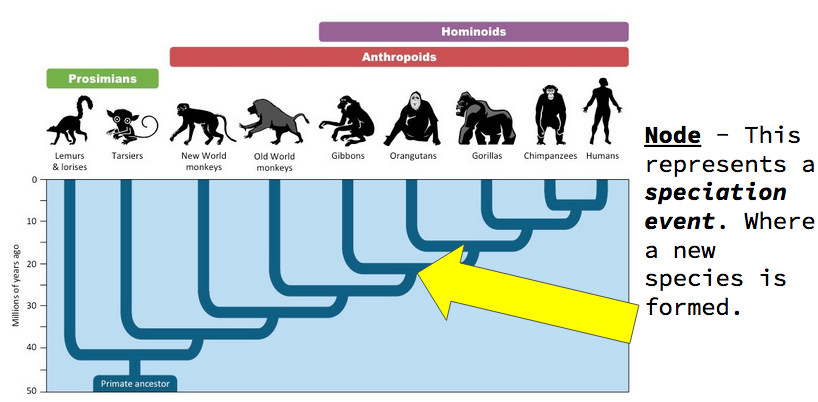
- Cladograms show the probable sequence of divergence and hence demonstrate the evolutionary history (phylogeny) of a clade.
- The fewer the number of nodes between two groups, the more closely related they are expected to be
Note:
What’s the difference between a phylogeny, an evolutionary tree, a phylogenetic tree, and a cladogram?
- Generally not much, often used interchangeably.
- A phylogenetic tree can show a much broader comparison, for example consisting of all life on Earth with a common ancestor.
- A cladogram typically focusing in a single ancestor and all of the divergences from that ancestor
Cladogram Features:
Root – The initial ancestor common to all organisms within the cladogram (incoming line shows it originates from a larger clade)
Nodes – Each node corresponds to a common ancestor that speciated to give rise to two (or more) daughter taxa
Outgroup – The most distantly related species in the cladogram. Functions as a point of comparison.

Taxon (plural Taxa) = any unit used in the science of biological classification, or taxonomy.
Example:
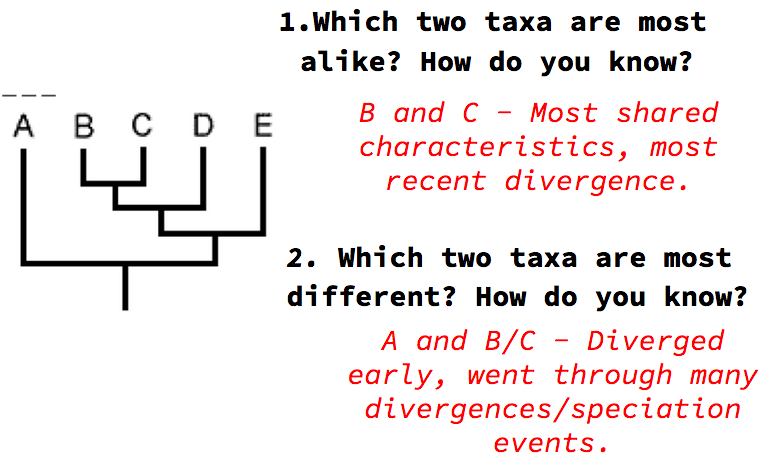

Constructing our own cladograms:
Cladograms can be constructed based on either a comparison of morphological (structural) features or molecular evidence.
Historically, structural features were used to construct cladograms, but molecular evidence is now more commonly used (Typically, we can look at percent similarities among DNA sequences – more they share the closer they are!)

Step 1: Organize selected organisms according to defined characteristics
- Use characteristics that are developmentally fixed (i.e. innate) and not influenced by environmental pressures
- Creating a matrix is helpful!
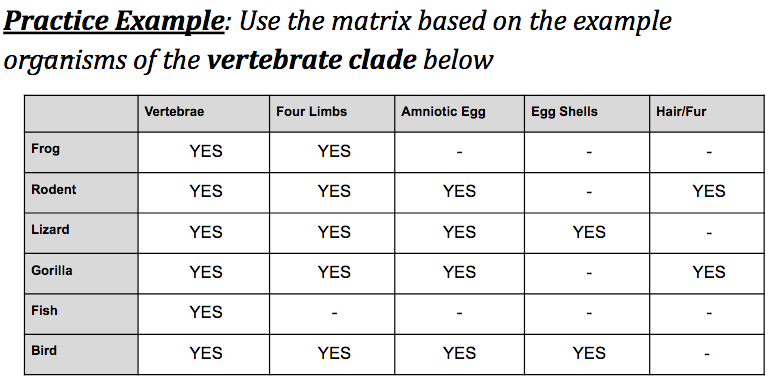
Step 2: Sequentially order organisms according to shared characteristics to construct a cladogram
- Each characteristic will be represented by a node, with more common characteristics representing earlier nodes.
- Remember: moving upward on a cladogram means you are moving upward in time!
Practice Pathway:
1. Complete “Missions 1 and 2” of the virtual evolution lab. This is an excellent resource that allows us to visualize the concept of cladistics and will connect strongly to unit two! Complete Virtual Lab walk through assignment.
Evolution Lab – Answer Key (Mission 1)
Mission 2 – Below
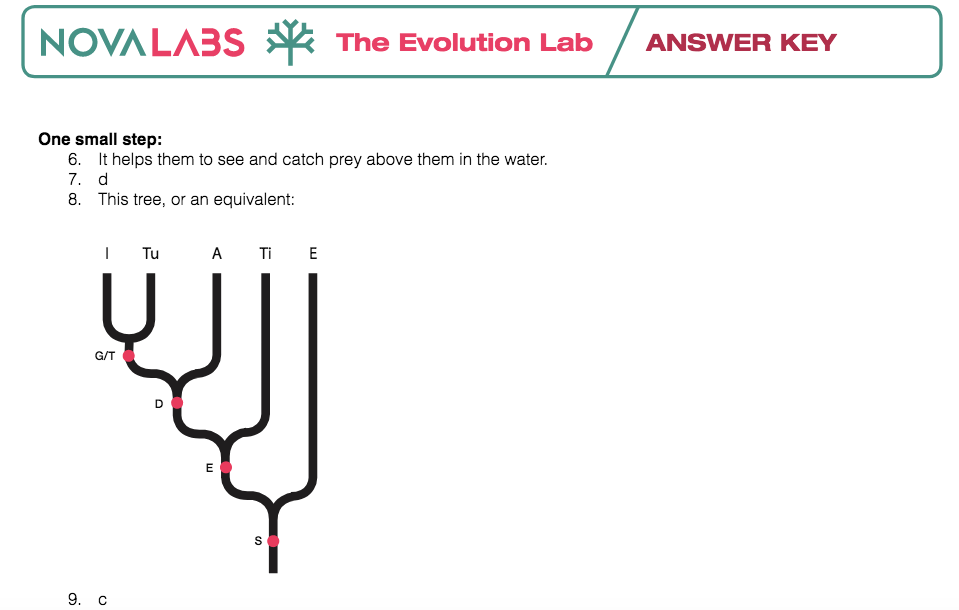
2. Practice cladisitics worksheet (Not for marks pages – Cladisitic Practice Key!)
3. Advanced cladistics practice [14]
Unit 1 Test Material:
- Unit 1-1 Taxonomy Notes – Order or levels, purpose, binomial nomenclature.
- Shark Key (I.e. how to use a dichotomous key/ what it is)
- Unit 1-2 Cladistics Notes
- Cladistic Practice Work including marked and unmarked work
Note: The Evo lab will help you and ideas about “equivalent trees” is important. I will not ask you about definitions such as amniotes, heterotrophs, autotrophs, etc.
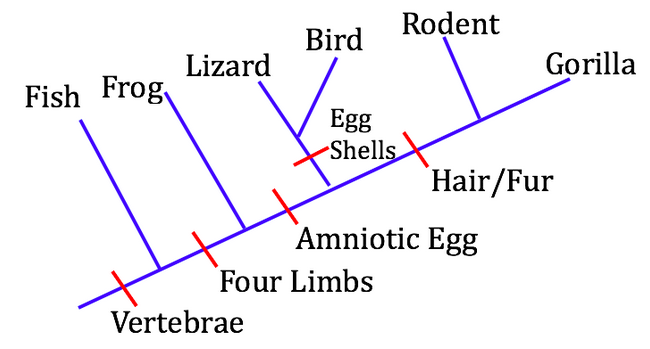
Comments by shaun pletsch